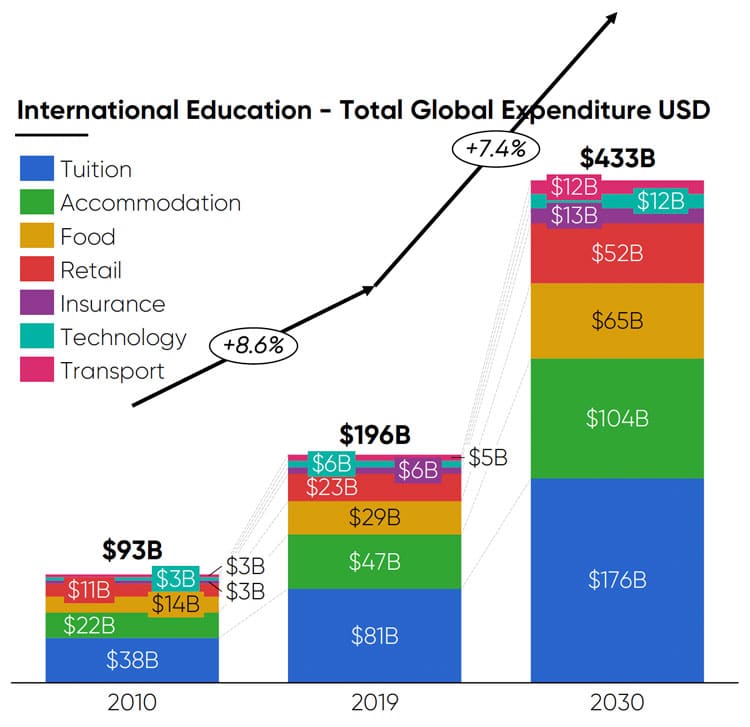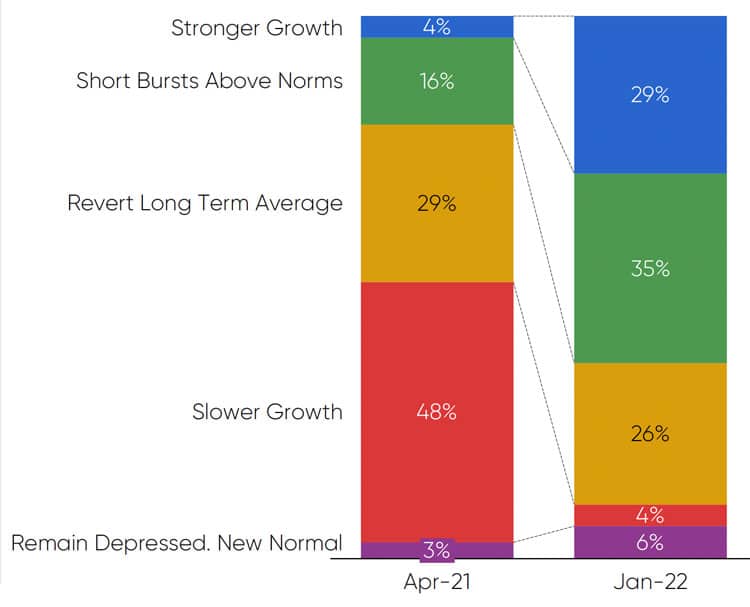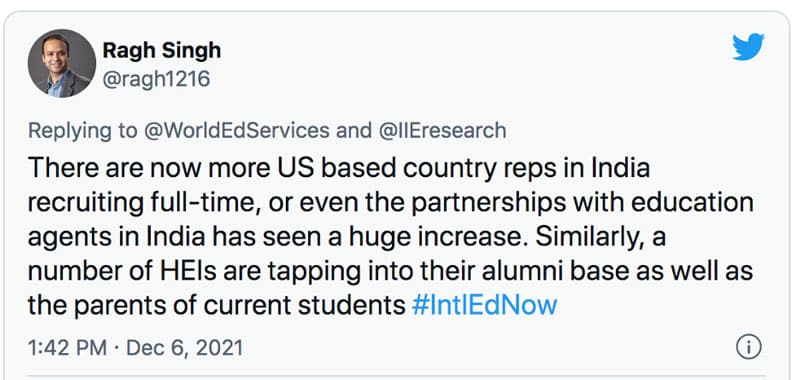Forecast projects major growth in international enrolments through 2030
- Market intelligence firm HolonIQ predicts that anywhere from 6 to 9 million internationally mobile students will enrol in foreign institutions by 2030, with an enrolment base of 8 million the most likely scenario
- The firm forecasts USD$433 billion in international student spending by 2030, more than double what it was in 2019
- NAFSA and WES, separately, recently assembled international education experts and educators to share their ideas about what the future holds for our industry
The global international education industry is poised not only for recovery from pandemic losses, but also for major expansion, according to a new analysis from the market intelligence firm HolonIQ. The firm anticipates that 8 million international students will be enrolled with foreign higher education institutions by 2030 – 3 million more than were abroad in 2019 – and that their total spending will amount to more than double what it was before the pandemic.
The HolonIQ report also considers that there is a new respect for the importance of international education among the wider public:
“The pandemic brought international education out into the public discourse from once being considered a niche phenomenon to now being better understood by the general public as a critical component of higher education and skilled workforce supply, as well as a significant economic pillar for many of the world’s major economies.”
HolonIQ’s predictions arise from what they call their “persistent high dimension forecasting model.” This model is aimed at rectifying issues related to the fact that established international enrolment and market sizing data instruments are diffused across several organisations (e.g., UNESCO and individual governments). HolonIQ believes this diffusion has presented “significant issues comparing apples and apples.”
$433 billion by 2030
In 2019, total international student spending spread across tuition, accommodation, food, retail, insurance, technology, transport was estimated at USD$196 billion. HolonIQ predicts that this will rise to $433 billion by 2030.

9 million international students
While HolonIQ sees 8 million students enrolled with foreign institutions as the most likely scenario for 2030, the firm also calls 9 million students a “plausible” possibility. The “downside” scenario they envision is for 6 million students to be enrolled by 2030. Their forecasts are the result of an analysis of UNESCO, OECD, Project Atlas, Open Doors, NAFSA, and various government websites for their Global Flows Project.
By far, the most demand will come from Africa and Asia. For the time being, students looking for top-ranked universities will often choose destinations such as the UK, the US, Australia, and Canada, which host more than half of universities in Times Higher Education’s ranking of the Top 200 higher education institutions.
Much more optimism
A survey programme HolonIQ has run over the course of the pandemic has revealed steadily increasing optimism among staff at universities and working with technology and services platforms. Where in April 2021, half of respondents expected slower growth in international enrolments over the next 5–10 years, that pessimistic proportion had shrunk to 10% by January 2022. In January 2022, two-thirds expected stronger growth or “short bursts above norms,” and another 26% expected enrolment trends to revert to typical levels.

Other experts offer advice and predictions
HolonIQ is naturally not the only organisation interested in exploring the future of international education and what it will take for institutions to attract students who have grown up amid the pandemic. For example, in December 2021, World Education Services (WES) held a social media forum in which international higher education thought leaders discussed the implications of data from the 2021 Open Doors Report on International Education Exchange. Key advice from participants (meant for US institutions but broadly applicable outside of the US as well) included:
- “Adopting a holistic, flexible approach to admissions policies by adjusting language requirements, extending application deadlines, waiving fees, and introducing test-optional or test-flexible policies.”
- [Understanding that] experiential learning (such as hands-on training programmes and pre- and post-graduation work placements) is an invaluable part of the learning process—and an important draw for international students.”
- [Making use of] “the latest educational technologies to increase awareness among prospective international students even before they decide where to apply.”
- Leveraging the power of alumni because students are increasingly intent on hearing from former students about what it’s like to study at an institution.
- “Cultivating] important relationships in target countries, such as partnerships with local higher education institutions, organisations working with high school students, and other education-focused organizations and companies.”

Similarly, NAFSA turned to international education experts last month for insights about what the future may hold; in this case, the 11 international educators focused on the near-term (2022). Here are some of the ideas they put forth:
“Mobility trends will continue to shift as students who desire to pursue degrees in English have more opportunities in non-English-speaking countries … With thousands of new English-medium programs around the world, there are fresh opportunities for pursuing strategic institutional partnerships and exchange programmes.” — Lindsay Addington, Senior strategic engagement executive, Duolingo
“2022 and beyond will call for a shift away from a front-loaded paradigm of recruitment, admissions, enrollment, and entry, to one where international students arrive and thrive. This shift is critical because students, too, are increasingly asking how their future institutions and host countries will serve them and what sorts of opportunities will be available to them.” — Founder, Rajika Bhandari Advisors; author, America Calling: A Foreign Student in a Country of Possibility
“The number of degree-seeking international students (most notably from China) opting to complete degrees in the United States will, at best, remain flat or, more likely, decline in the ensuing years. This new reality will prompt more US public universities to consider international dual degrees and joint institutes where the overseas students spend their entire 4 years, or perhaps 3 of the 4 years, earning their international degree in situ.” — William I. Brustein, former vice president for global strategies and international affairs; Eberly Family Distinguished Professor of History, West Virginia University
“Will students still travel for degrees? Of course. But they may also be pickier about where they will go and how far. Prestige will continue to draw students, and talent will move. But I think we can also expect that students may contemplate more intra-regional moves, and this provides an opportunity for more institutions in the Global East and Global South to grow.” — Jane Gatewood, Vice provost for global engagement, University of Rochester
The future looks bright, and different
Looking at HolonIQ forecasting, alongside the insights top international educators and experts offered to WES and NAFSA, it seems clear that opportunities abound for recruiting international students this year and beyond. It is equally clear that incorporating new thinking, platforms, partnerships, and markets into existing strategies will be required to seize those opportunities.
For additional background, please see:















